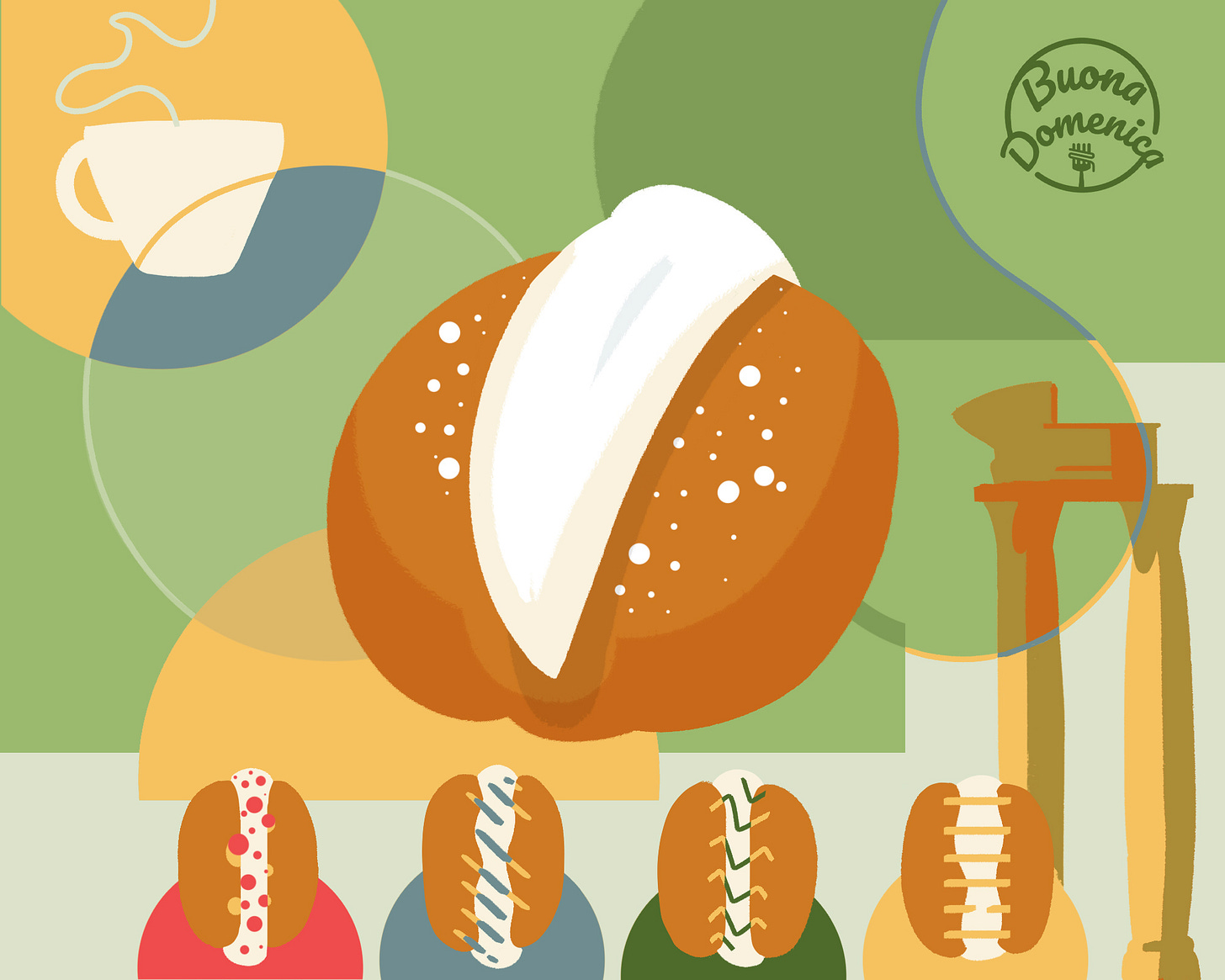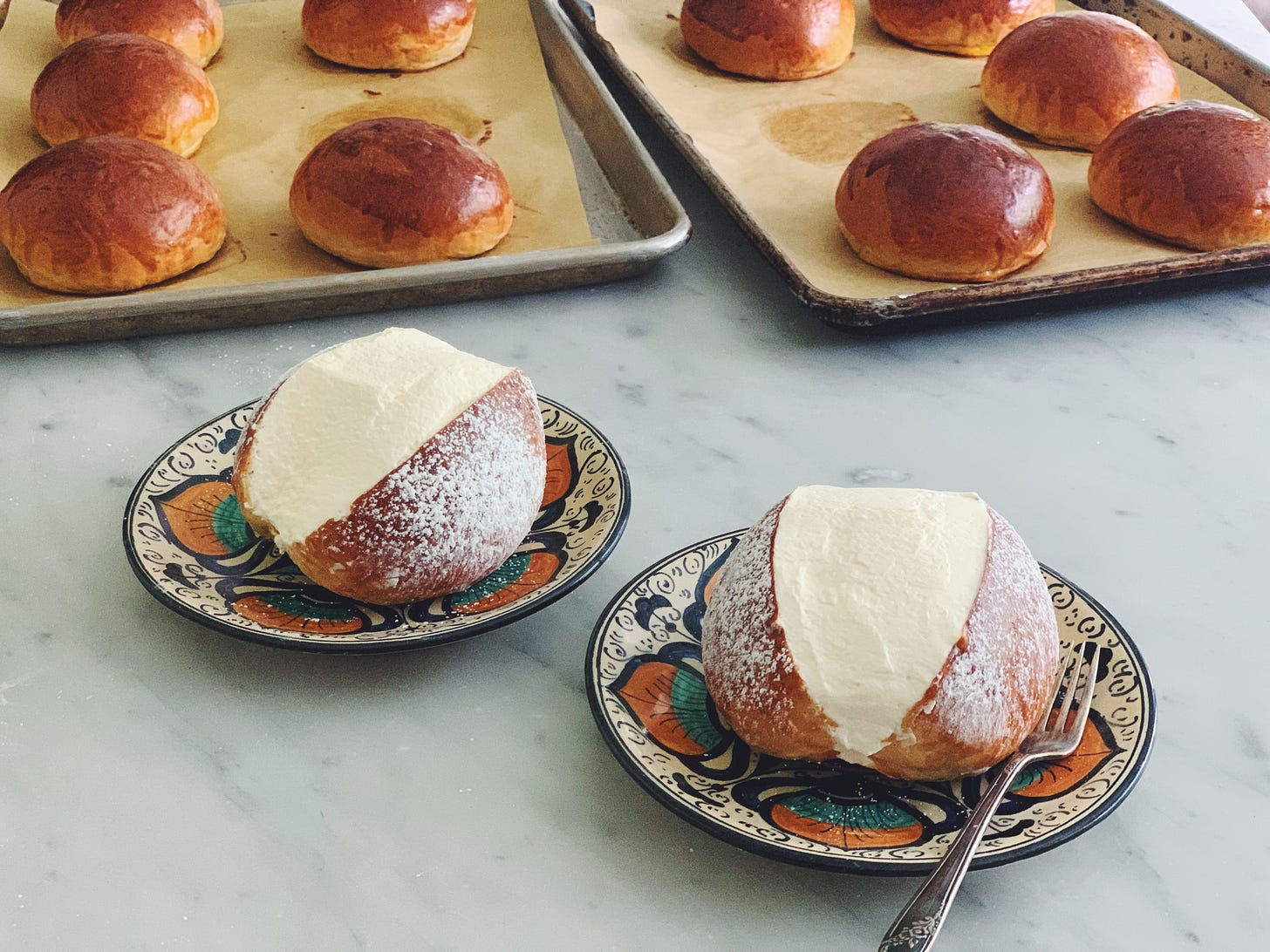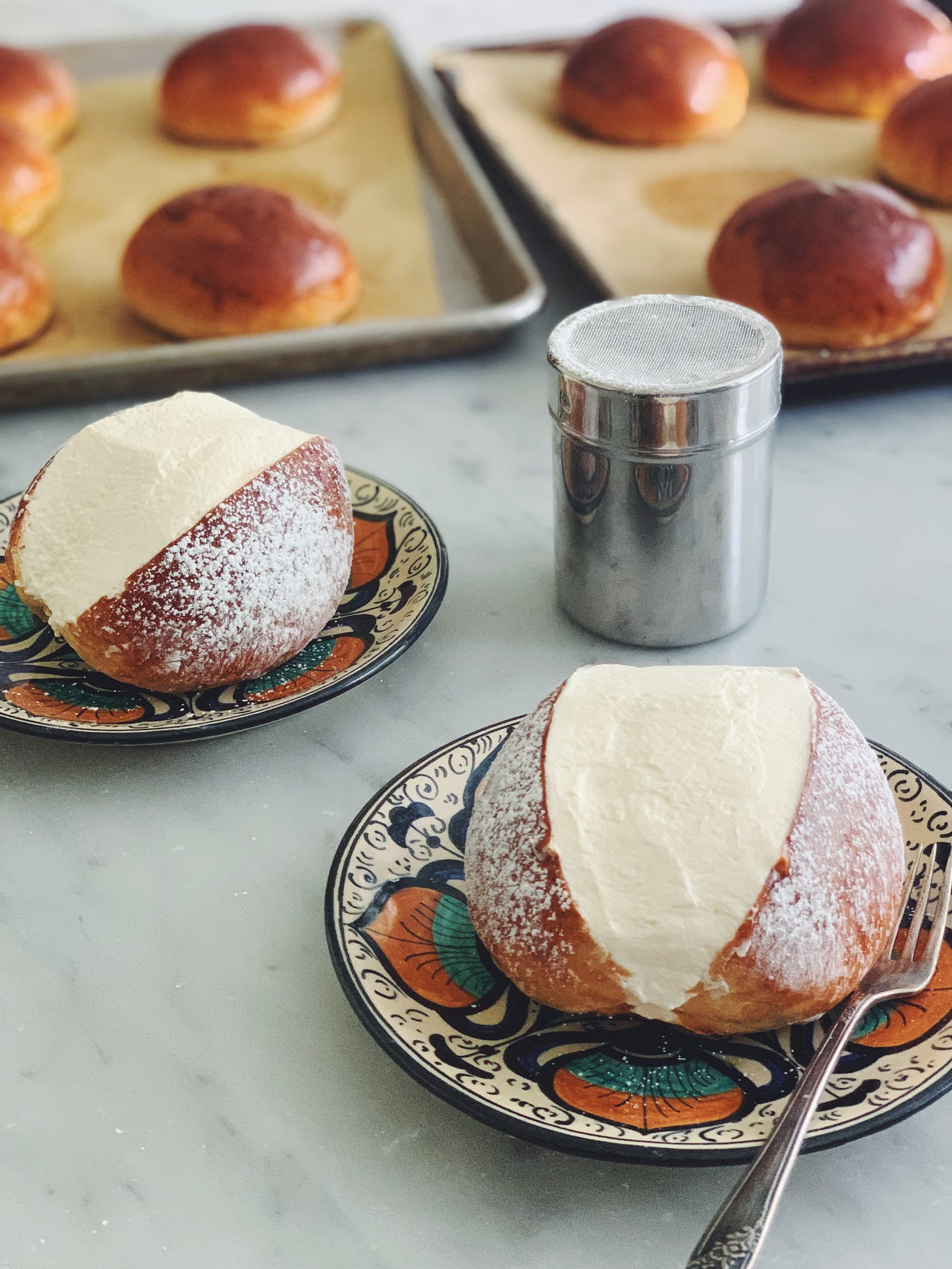
Benvenuti ~ Welcome to Buona Domenica, a weekly newsletter of Italian home cooking and baking. I’m a journalist, cooking teacher, occasional tour guide, and author of eight cookbooks on Italian cuisine.
And hello, new subscribers! Thank you to
and Substack for featuring Buona Domenica in the weekly Substack Reads digest, which is how many of you found me. Daniela, my ace illustrator, and I are actually on a break this week. So I thought I would use this opportunity to send out one of my favorite posts from the archive: I Maritozzi, my ode to a favorite sweet Roman bun, originally published in June 2022. The newsletter itself is free to all subscribers, and the recipe is accessible to paid subscribers.Click here to browse through the archive. If you’re looking for a particular recipe, you’ll find all Buona Domenica recipes—157 and counting—indexed here, ready to download and print—a function for paid subscribers.
If you are able to do so, please consider supporting my work by becoming a paid subscriber.
On to the newsletter…
The month of June will always be maritozzo season for me. It was just around this time every year—the third week of June—that my mom, my sister and I arrived in Italy for the summer (our dad would join us in July). Most of our long, languorous (and, let’s face it, completely undeserved, at least on my part) vacation was spent at the beach on the Adriatic coast of Abruzzo, but it was always bookended with a few days’ stay at my aunts’ apartment near Villa Ada, in Rome.
The days were hot, though not unbearably so. We kept the windows open for the breeze and the wooden persiane (blinds) partially lowered to block out the heat. Our street, Via Fogliano, was lined with big, lush flowering trees with broad leaves (I wish I knew what kind!) and blooms that had a rich, slightly cloying honey perfume. I have a distinct memory—it must have been the summer of 1972—of breathing in their scent one afternoon as someone walked past the window, whistling the theme song to The Godfather.
Those were halcyon days for sure, my mother happily reunited with her three older sisters for the entire summer, my sister, Maria, and I basking in the attention and affection of four Tomassoni women (our mom was the only one who was married with kids so our aunts really spoiled us).
One of our annual rituals was a visit to Pasticceria Marinari, my aunts’ favorite bakery, in Piazza Sant’Emerenziana. In the 1970s, the pasticceria had a large, bright green sign with gold lettering and two big display cases filled with butter cookies and all kinds of cream-filled cakes and opulent sugar-dusted sweets (the sign is now red and the interior has been completely redone but the pastries are still as fresh and indulgent as ever). Maria and I always, always chose the same thing: two giant tooth-achingly sweet meringues sandwiched with piped whipped cream and gilded with a dark chocolate drizzle. Our mother, however, needed to have her maritozzo fix. She adored this Roman classic, a sweet, soft, oval-shaped yeasted bun split open and lavishly stuffed with fresh whipped cream. So she walked a few steps down the street to Bar Romoli.
I can hear her voice clear as the blue June sky, even though it’s been many years: “Ooooh, i maritozziiiiii!” as if the buns had appeared in the display case by chance the moment she walked in the door. They are, in fact, a long Roman tradition, once a Lenten indulgence (oxymoron alert!) but now commonly enjoyed for breakfast or an afternoon snack. The name “maritozzo” comes from the word “marito,” which means husband. In generations past, the story goes, husbands would present their wives with a maritozzo every Friday of Lent, though in some versions it was the wives who gifted the pastry to their husbands. (“Maritozzo” was also my mom’s preferred term of endearment for my dad.)
Like so many Italian foods that have achieved iconic status, maritozzi have become popular beyond the walls of the Eternal City. The other day I came across an article from a popular food magazine about “the big Italian cream buns” sweeping across America and, apparently, TikTok (which I am not on and don’t follow). What makes them so special? It is a combination of things: the perfect balance of citrus and vanilla that gives the dough its quintessential “Italian” flavor (at least that’s how I think of it); the softness of the butter- and egg-enriched bun, which is just the right texture to cradle an abundance of airy whipped cream; and the cream itself, which must be rigorosamente fresh. Also, their gorgeous simplicity and the way the cream is meticulously smoothed out to be flush with the top of the bun. And the fact that, in spite of their richness, maritozzi are impossibly light. Nowadays there are lots of riffs and variations (including savory) but none beats the classic.
I tried to make them when my kids were young, using Carol Field’s recipe in “The Italian Baker.” I blame my lack of bread baking experience for the lackluster result. The buns were dry and bland; I think I added too much flour as I tried to handle to soft dough. Some things, I figured, are best left to the professionals. I was curious when, last week, a DC restaurant posted an enticing photo of a filled maritozzo, so I made brunch reservations for the family for two days later, only to be told when we got there that maritozzi had been replaced on the menu by strawberry focaccia. What?! By now I had a craving that would not be quelled.
So I made them again, this time using a recipe from a favorite Italian blog, and they turned out beautifully, as good as any I’ve had from a pasticceria, tasting of citrus and butter and cream and serene summer days.
RECIPE: Maritozzi con la Panna
Making maritozzi from scratch is a great weekend project. A few things to keep in mind, especially if you are not an experienced baker:
Keep reading with a 7-day free trial
Subscribe to Buona Domenica to keep reading this post and get 7 days of free access to the full post archives.





